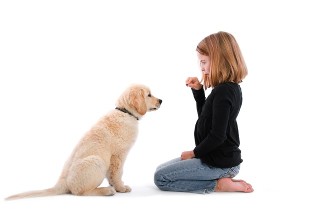New Patient Information
We have a number of resources for you to learn about how to take better care of your pets. The best veterinary care for pets is ongoing nutrition and problem prevention.
Visit our pages on Kitten and Puppy Care by clicking the links.
New Patients Welcomed
When you are looking for veterinary care, you should be able to count on superior care and excellent service. We have assembled an expert team of veterinary professionals to bring you the best possible health care for your pet. We have a state-of-the-art veterinary facility, which is clean and comfortable.
Twice a year, you should bring your pet in for a check-up. This includes a full physical exam, and may include blood work, and teeth and gum cleaning, if needed. Our doctors check the health of your pet from nose to tail. You are sure to be happy that you chose to work with us.
Your Pet’s Medical History
Bring in any medical history you have of your pet when you come to our veterinary clinic. It’s best to keep a journal of your pet’s health throughout his or her life, including behavioral shifts. If you have something like this, share it with our team. If not, let us know everything that you think will be important. Our doctor works with whatever information you have. Additionally, in uncommon circumstances, she refers you to a specialist that has advanced expertise in areas, such as internal medicine or for complex surgeries.
New Client Form for 1-2 pets – If you have more than 2 pets, please use this form to provide information for their files.
Formulario de nuevo cliente en español para 1 o 2 mascotas – Si tiene más de 2 mascotas, por favor notifíquenos. Próximamente formulario en español para varias mascotas.
¡El formulario de entrega en español estará disponible próximamente!
Caring For Your New Puppy
No matter where you adopt or purchase your puppy from, it is important to get his or her initial veterinary exam performed shortly thereafter. We will perform a full physical exam and look over any records you may have and advise you as to how to keep your puppy healthy.
Some of the obvious things that you will need for him include bowls, collar/harness/tag, toys, and a crate but some things that you may not think of right away include a veterinary exam and puppy training classes.
Training
 Training classes are important to start on at a young age to help avoid unwanted behaviors as they grow. While most puppies can be trained at home for the basic commands within the confines of their own homes, many of them will stop listening to their owners once they go outside and are distracted by the world around them. This is where puppy training classes are crucial. The very basic commands that all puppies should know are sit, stay, come, lay down, leave it, and drop it. All dogs should be able to perform these commands whether inside the home or out in public. The stay command should be followed by your puppy until you give them their release word and tell them they are free to go (even if you do not release them for more than 10 minutes!). Training your puppy with these basic commands while they are young can also help avoid things like separation anxiety and destructive behaviors.
Training classes are important to start on at a young age to help avoid unwanted behaviors as they grow. While most puppies can be trained at home for the basic commands within the confines of their own homes, many of them will stop listening to their owners once they go outside and are distracted by the world around them. This is where puppy training classes are crucial. The very basic commands that all puppies should know are sit, stay, come, lay down, leave it, and drop it. All dogs should be able to perform these commands whether inside the home or out in public. The stay command should be followed by your puppy until you give them their release word and tell them they are free to go (even if you do not release them for more than 10 minutes!). Training your puppy with these basic commands while they are young can also help avoid things like separation anxiety and destructive behaviors.
Unfortunately, behavior problems are one of the top reasons why pets are surrendered to shelters so prevention and early training are key. We recommend choosing a trainer based on the recommendations set by the American College of Veterinary Behavior.
Housetraining
 After scheduling your first veterinary exam, one of the first things you will want to work on is housetraining your puppy. A common misconception is that it is “cruel” to crate a puppy. All dogs should have regular exercise and play time but in fact, it is very important that your puppy be crate trained so that he has a safe place to be whenever not supervised, especially during the training process. Many puppies will chew and/or eat objects that could be dangerous to them and possibly leave destruction in their paths. Puppies should be leash walked outside to go potty at all times. There should be no opportunity for your puppy to play outside until after he goes potty. Immediately after going potty, reward should follow. This can mean either a favorite treat or letting them know what a good puppy he is. Puppies should be leash-walked outside about 6-8 times per day whenever possible while learning: approximately 10 minutes after eating/drinking, first thing in the morning, right before bed time, and right after coming out of the crate at any point. It can take a few months but with patience and persistence, your puppy will learn. If you are doing everything correctly yet you think that your puppy is not catching on as he should, sometimes medical conditions can cause puppies to have accidents more frequently than expected.
After scheduling your first veterinary exam, one of the first things you will want to work on is housetraining your puppy. A common misconception is that it is “cruel” to crate a puppy. All dogs should have regular exercise and play time but in fact, it is very important that your puppy be crate trained so that he has a safe place to be whenever not supervised, especially during the training process. Many puppies will chew and/or eat objects that could be dangerous to them and possibly leave destruction in their paths. Puppies should be leash walked outside to go potty at all times. There should be no opportunity for your puppy to play outside until after he goes potty. Immediately after going potty, reward should follow. This can mean either a favorite treat or letting them know what a good puppy he is. Puppies should be leash-walked outside about 6-8 times per day whenever possible while learning: approximately 10 minutes after eating/drinking, first thing in the morning, right before bed time, and right after coming out of the crate at any point. It can take a few months but with patience and persistence, your puppy will learn. If you are doing everything correctly yet you think that your puppy is not catching on as he should, sometimes medical conditions can cause puppies to have accidents more frequently than expected.
Crate Training
 Although it may seem counterintuitive, crate training your puppy should be a positive experience. We recommend giving your puppy his meals inside the crate so that the crate is associated with something positive. Also, having a favorite toy and a bed in the crate can make it a positive experience. The crate should never be used for punishment. The crate should only be large enough that he can have his food, water, bed, and a toy in it but not so large that he can urinate on one side of it and then go and lay on the other side of it. Fortunately, most (but not all) puppies do not like to lay down where their urine or feces is. Try to have your puppy in the crate on occasion when you are home so that your puppy does not associate the crate with you being gone from home. Many puppies will whine for attention in their crate and giving them this attention will only reinforce continued whining.
Although it may seem counterintuitive, crate training your puppy should be a positive experience. We recommend giving your puppy his meals inside the crate so that the crate is associated with something positive. Also, having a favorite toy and a bed in the crate can make it a positive experience. The crate should never be used for punishment. The crate should only be large enough that he can have his food, water, bed, and a toy in it but not so large that he can urinate on one side of it and then go and lay on the other side of it. Fortunately, most (but not all) puppies do not like to lay down where their urine or feces is. Try to have your puppy in the crate on occasion when you are home so that your puppy does not associate the crate with you being gone from home. Many puppies will whine for attention in their crate and giving them this attention will only reinforce continued whining.
While there are some instances where a puppy may seem to be very well behaved and does not need training, it is still important to make sure they are comfortable in a crate. At some point in their lives they will have to be in a crate whether it is to be boarded while you are away or even for a short time in a hospital and we do not want it to be negative and scary for them someday when they are in that situation.
(*None of the advice above can replace individualized advice from a professional dog trainer based on your puppy’s personality.)
Caring For Your New Kitten
 Most often, caring for a new kitten is less involved than caring for a new puppy. This is for many reasons but one of the main reasons is because kittens have a natural instinct to eliminate in sandy/gravel textured material. Therefore, when trying to train a kitten to go in a litterbox, it is a good idea to keep them in a bathroom or bedroom for at least a few days where they have their litterbox, food, water, bed, and toys. You may want to place your kitten in the litterbox a few times per day. Most kittens will naturally gravitate toward the litterbox to eliminate. After a few days (or a few weeks depending on how fast they learn) they can come out of this bathroom or bedroom and venture out.
Most often, caring for a new kitten is less involved than caring for a new puppy. This is for many reasons but one of the main reasons is because kittens have a natural instinct to eliminate in sandy/gravel textured material. Therefore, when trying to train a kitten to go in a litterbox, it is a good idea to keep them in a bathroom or bedroom for at least a few days where they have their litterbox, food, water, bed, and toys. You may want to place your kitten in the litterbox a few times per day. Most kittens will naturally gravitate toward the litterbox to eliminate. After a few days (or a few weeks depending on how fast they learn) they can come out of this bathroom or bedroom and venture out.
Furniture Scratching
Scratching on vertical or horizontal surfaces is a normal part of feline behavior (to mark territory or groom their claws). Cats should be provided with appropriate places to scratch as an alternative to furniture or other undesirable objects. Some cats prefer vertical and some prefer horizontal scratching surfaces. It is important to try both options for some kittens to determine what their preference is.
 Trimming nails once or twice monthly is recommended. Soft Paws or Kitty Caps are plastic nail caps that will make their nails blunt so they cannot damage furniture while wearing them. When applied correctly, these nail caps will usually stay on for 2-4 weeks. We are more than happy to help with nail trimming and applying these nail caps regularly if this is not something easily done at home. Thick double sided sticky tape (sold at pet stores) can also be applied to furniture to make it a less desirable area for the kitten to scratch.
Trimming nails once or twice monthly is recommended. Soft Paws or Kitty Caps are plastic nail caps that will make their nails blunt so they cannot damage furniture while wearing them. When applied correctly, these nail caps will usually stay on for 2-4 weeks. We are more than happy to help with nail trimming and applying these nail caps regularly if this is not something easily done at home. Thick double sided sticky tape (sold at pet stores) can also be applied to furniture to make it a less desirable area for the kitten to scratch.
Biting/Scratching
This is very common in kittens (and cats less than 2 years old) and sometimes it can even seem that the kitten is being more aggressive toward one member of the household than others. At times, they may draw blood with their teeth or claws.
Behaviors to watch for that can indicate play aggression in your kitten include hiding, chasing, stalking, and pouncing prior to the bite or scratch. Often play agression occurs in kittens that were orphans and did not get to play with their littermates to learn how to properly inhibit this injurous play behavior. When they are able to play with their littermates, they learn that biting or scratching hurts but often will not learn that when they do not have littermates to learn from.
How to try to fix it
Provide appropriate toys for chasing and exploration. Rotate toys every few days to keep your kitten from getting bored of the same toys. Many kittens like boxes and play centers that they can climb. (These play centers can be found at most pet stores or online.) This is key to keep your kitten mentally stimulated.
Make sure that no one in the household is encouraging play using hands, feet, or other body parts.
Give your kitten the most attention when he is calm and quiet. If your kitten is vocalizing or swatting/patting you, ignore him.
Ensure that you are making the time to initiate play with your kitten a couple of times per day. This way you are initiating the right kind of play with toys (and not your arms).
Place a collar with a bell so that you are always aware of where your kitten is and therefore hopefully this bell may warn you of an impending attack. Whenever possible, take away their hiding spots where they may “stalk” their prey from behind (the prey is the human or other pet in this situation).
Keep the nails trimmed short.
There may be times where getting another kitten of the same age may help so that the play can be directed toward one another but this can also be tricky. Some cats may be more difficult to introduce to each other than others.
